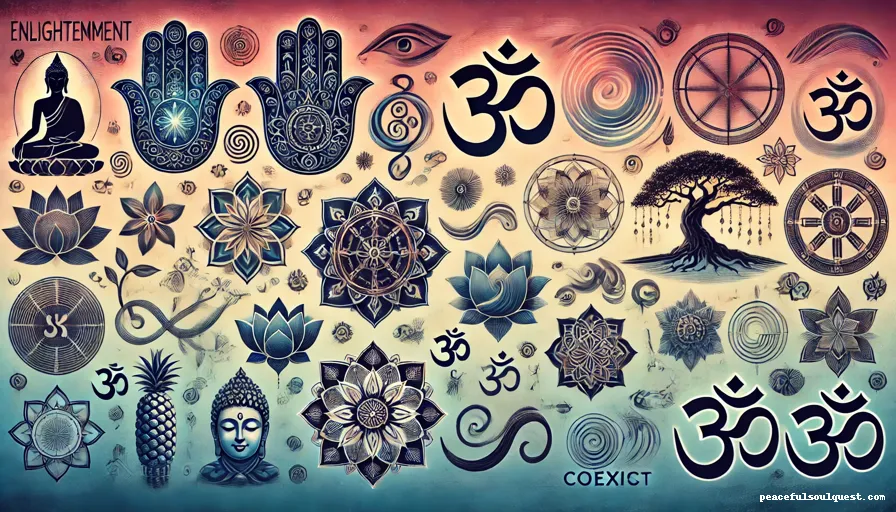Symbols of Enlightenment are like spiritual shortcuts—reminders that we’re not just slogging through life for the sake of it.
They give us hope, direction, and a sprinkle of magic.
Curious about which symbols can light up your spiritual path? Spoiler: They’re more impactful than you think. Keep reading to discover why.
What is Enlightenment?
Enlightenment is a profound concept that many spiritual traditions aspire to understand. At its core, it means reaching a state of inner peace and wisdom.
For centuries, people have sought enlightenment as a way to transcend the material world and connect with a higher state of being. Pursuing Symbols of Enlightenment is about more than knowledge; it’s about transformation..
The Symbols of Enlightenment play a crucial role in guiding individuals on this journey. They serve as reminders and tools to focus our thoughts and energies on achieving higher consciousness. In various cultures, these symbols are revered and often used in meditation and rituals.
Historical Context and Cultural Significance
The history of Symbols of Enlightenment is rich and varied. These symbols have been part of human civilization for thousands of years, appearing in ancient texts, artifacts, and art.
For example, the Lotus Flower, common in Buddhism and Hinduism, symbolizes purity and spiritual growth.
Each symbol carries deep cultural significance. They not only represent the path to enlightenment but also embody the values and teachings of different spiritual traditions.
By studying these symbols, we gain insight into how ancient cultures understood and practiced enlightenment.
1. The Lotus Flower
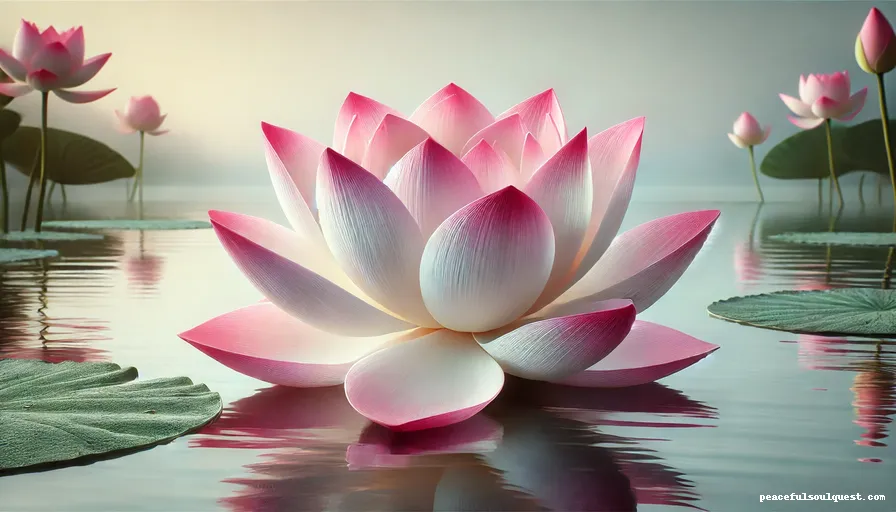
Symbolism in Various Cultures
Buddhism
In Buddhism, the Lotus Flower symbolizes the purity of the mind and soul. Despite growing in muddy water, it emerges clean and beautiful, reflecting the journey towards enlightenment.
It represents the idea that one can rise above worldly troubles and achieve a state of spiritual clarity.
Hinduism
In Hinduism, the Lotus Flower is associated with several deities, including Lakshmi and Brahma. It symbolizes creation, beauty, and the unfolding of spiritual consciousness.
The flower’s petals represent the various stages of spiritual awakening.
Other Eastern Religions
Other Eastern religions also hold the Lotus Flower in high regard. In Jainism, it symbolizes the purity and enlightenment of the Tirthankaras. In Sikhism, it represents spiritual growth and purity.
Lotus Flower – Symbolism in Various Cultures
| Culture/Religion | Symbolism of the Lotus Flower |
|---|---|
| Buddhism | Purity of mind and soul; spiritual awakening; rising above worldly troubles. |
| Hinduism | Creation, beauty, and the unfolding of spiritual consciousness; associated with deities like Lakshmi and Brahma. |
| Jainism | Purity and enlightenment of the Tirthankaras (spiritual teachers). |
| Sikhism | Spiritual growth and purity; represents the soul’s journey from darkness to light. |
Representations and Meanings
The Lotus Flower is not just a visual symbol but also a profound metaphor for spiritual growth. It teaches us that, like the lotus, we can rise above our circumstances and reach a higher state of being.
This symbol encourages us to stay resilient and maintain our inner purity, regardless of the challenges we face.
Usage in Art and Tattoos
The Lotus Flower is widely used in art and tattoos as a symbol of enlightenment. Its intricate design and deep meaning make it a popular choice for those seeking to express their spiritual journey.
Whether depicted in paintings, sculptures, or body art, the lotus serves as a constant reminder of our potential for spiritual growth.
2. The Dharma Wheel (Dharmachakra)
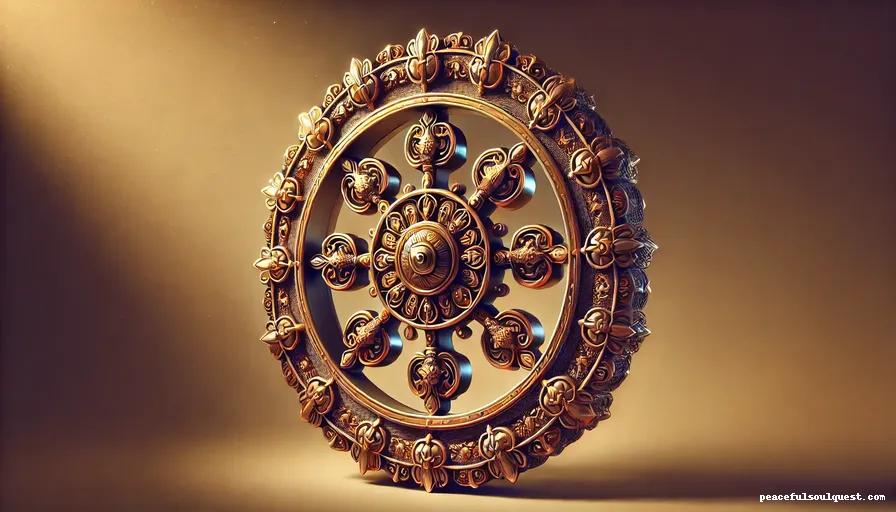
Origin and Historical Significance
The Dharma Wheel, or Dharmachakra, is one of the most significant Symbols of Enlightenment in Buddhism. It represents the teachings of the Buddha and the path to spiritual awakening.
The wheel’s origins can be traced back to ancient India, where it was used to symbolize the Buddha’s first sermon.
Symbolic Components
The Hub, Rim, and Spokes
The Dharma Wheel consists of three main parts: the hub, the rim, and the spokes. Each component has a specific meaning.
The hub represents moral discipline, the rim signifies concentration, and the spokes symbolize wisdom. Together, these elements illustrate the path to enlightenment.
| Component | Symbolism |
|---|---|
| Hub | Moral discipline |
| Rim | Concentration |
| Spokes | Wisdom |
The Eightfold Path
The Eightfold Path is a key teaching in Buddhism, represented by the eight spokes of the Dharma Wheel. It includes right view, right intention, right speech, right action, right livelihood, right effort, right mindfulness, and right concentration.
These practices guide individuals towards enlightenment and help them lead a balanced and ethical life.
Interpretations in Different Religions
Buddhism
In Buddhism, the Dharma Wheel is a powerful symbol of the Buddha’s teachings. It reminds practitioners of the importance of following the Eightfold Path and maintaining a disciplined, mindful approach to life.
Hinduism
In Hinduism, the Dharma Wheel is associated with the god Vishnu. It represents the preservation of cosmic order and the protection of dharma (moral law). The wheel signifies the continuous cycle of creation and destruction.
Jainism
For Jains, the Dharma Wheel symbolizes the wheel of time and the cyclical nature of existence. It also represents the 24 Tirthankaras, who are spiritual teachers that guide individuals towards enlightenment.
3. The Bodhi Tree and Bodhi Leaf

Significance in Buddhism
The Bodhi Tree is perhaps one of the most iconic Symbols of Enlightenment in Buddhism. It is under this tree that Siddhartha Gautama, who later became known as the Buddha, attained enlightenment after meditating for 49 days.
The tree represents the awakening and ultimate understanding of the true nature of reality.
Symbol of Awakening and Enlightenment
The Bodhi Leaf, with its heart-shaped structure, symbolizes spiritual awakening and the pursuit of enlightenment. It reminds us of the importance of perseverance and dedication on our spiritual journey.
Just as the Buddha achieved enlightenment under the Bodhi Tree, we too can find our path to spiritual awakening.
Historical Stories and Modern Usage
Throughout history, the Bodhi Tree has been a site of pilgrimage for Buddhists. Its leaves are often used in religious ceremonies and as amulets to bring good fortune and spiritual protection.
In modern times, the symbol of the Bodhi Tree and leaf is used in various forms of art, literature, and meditation practices to inspire and guide those seeking enlightenment.
4. The Om (Aum) Symbol
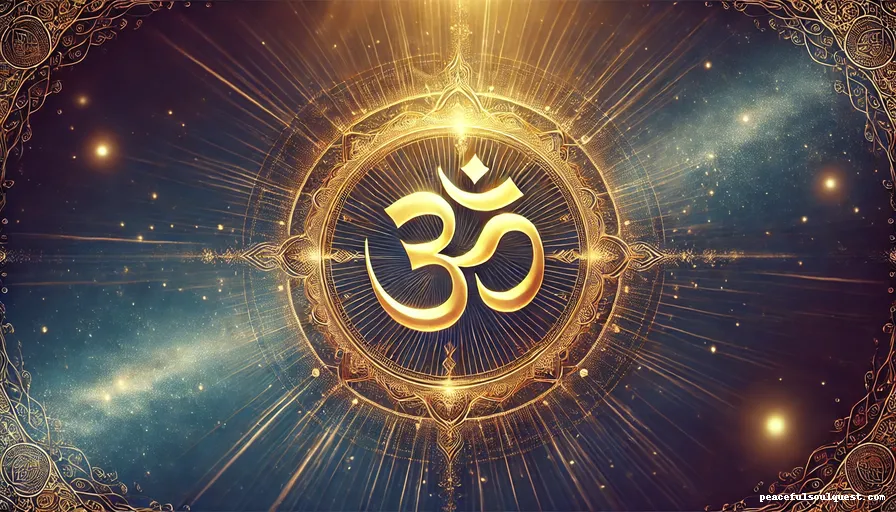
Meaning and Spiritual Importance
The Om symbol, often spelled Aum, is a sacred sound and spiritual icon in Indian religions. It represents the ultimate reality and the universe’s fundamental sound.
Chanting Om is believed to create a sense of peace and harmony, connecting the practitioner with the divine.
Representation of Consciousness States
The symbol’s design consists of three curves, a semicircle, and a dot. These elements represent different states of consciousness:
- The large lower curve symbolizes the waking state.
- The middle curve denotes the dream state.
- The upper curve represents the state of deep sleep.
- The dot signifies the fourth state, Turiya, which is the state of ultimate consciousness and enlightenment.
Use in Meditation and Spiritual Practices
Chanting Om is a common practice in meditation and yoga. It helps to calm the mind, balance the chakras, and align the practitioner with the vibrations of the universe.
The Om symbol is often used in mantras and rituals to invoke spiritual energy and promote a sense of unity with the cosmos.
5. The Endless Knot (Shrivatsa)

Symbolism of Interconnectedness
The Endless Knot, or Shrivatsa, is a symbol of eternal connection and the interweaving of the spiritual path. It represents the interconnectedness of all things and the endless cycle of life, death, and rebirth.
This symbol reminds us that everything in the universe is linked and that our actions have far-reaching consequences.
Cultural and Religious Interpretations
In Tibetan Buddhism, the Endless Knot is one of the Eight Auspicious Symbols. It represents the intertwining of wisdom and compassion, essential qualities for achieving enlightenment.
In Hinduism, it signifies the eternal nature of the soul and the continuity of the spiritual journey.
Usage in Art and Jewelry
The Endless Knot is frequently found in Tibetan art, jewelry, and textiles. Its intricate design and profound meaning make it a popular motif for those seeking to express their spiritual beliefs.
Wearing or displaying the Endless Knot can serve as a reminder of the interconnectedness of all things and the importance of living a compassionate life.
6. The Spiral
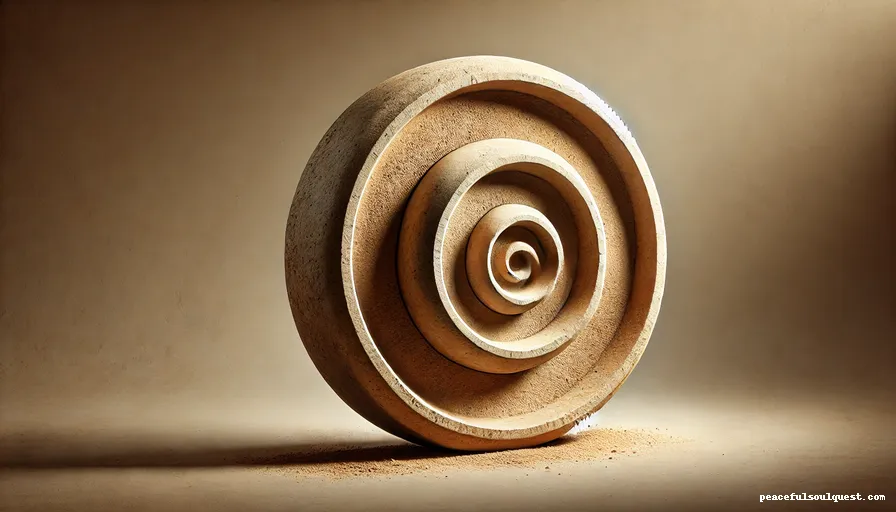
Representation of Growth and Rebirth
The Spiral is a profound Symbol of Enlightenment representing growth, rebirth, and the cyclical nature of life. This symbol appears in numerous cultures and spiritual traditions, symbolizing the journey from the outer consciousness to the inner soul.
The Spiral suggests that life is not linear; instead, it is a series of cycles that bring us closer to our core, our true selves.
In nature, spirals can be seen in galaxies, shells, and even the structure of DNA, which highlights the universal presence of this symbol.
The Spiral teaches us that life is a continuous process of expansion and contraction, where each cycle brings new opportunities for growth and learning.
Cultural Significance and History
The Spiral has been revered across various cultures throughout history. In Celtic traditions, the triple spiral, or Triskelion, represents the interconnectedness of life, death, and rebirth.
It is a symbol of the eternal cycle of life and a reminder of the spiritual journey that leads to enlightenment.
In ancient Greece, the Spiral was associated with the labyrinth, a complex maze that represented the intricate journey of the soul towards self-discovery and enlightenment.
The Spiral is also a prominent symbol in shamanism, where it is believed to represent the spiritual journey of the shaman as they navigate between the physical and spiritual worlds.
Symbolism in Nature and Spirituality
The Spiral is not just a symbol found in cultural artifacts but also a recurring pattern in nature. The spiral shapes in shells, flowers, and weather patterns serve as reminders of the natural progression of life.
These natural spirals symbolize how all things are interconnected and how the universe itself follows a spiral path.
In spirituality, the Spiral is often used as a tool for meditation and reflection. By focusing on the spiral, individuals can connect with the cyclical nature of their own lives and gain insights into their spiritual journey.
The Spiral encourages us to embrace the twists and turns of life, understanding that each step brings us closer to enlightenment.
7. The Hamsa Hand
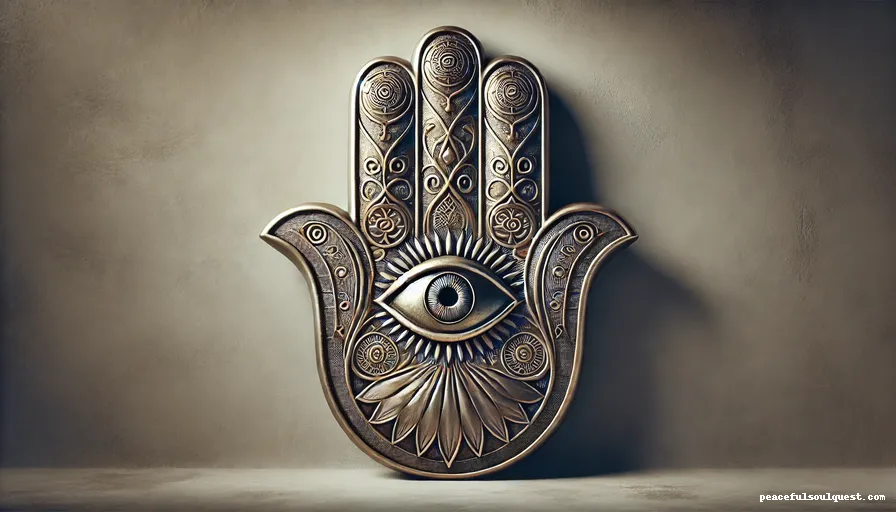
Origins and Historical Significance
The Hamsa Hand is a powerful Symbol of Enlightenment and protection, with origins that trace back to ancient Mesopotamia.
It is also known as the Hand of Fatima in Islamic tradition and the Hand of Miriam in Jewish tradition. The Hamsa is believed to provide protection against the evil eye and is often used to ward off negative energies.
Historically, the Hamsa Hand has been a symbol of divine protection and blessings. In ancient cultures, it was used as an amulet to bring good fortune and safeguard the bearer from harm.
The symbol’s widespread use across different religions and cultures highlights its universal appeal as a protector and a guide on the path to enlightenment.
Symbolism in Different Religions
Judaism
In Judaism, the Hamsa Hand is often associated with the five books of the Torah and is seen as a symbol of God’s protection.
It is believed that the Hamsa can ward off evil spirits and bring blessings to those who carry it.
Islam
In Islamic culture, the Hamsa Hand is known as the Hand of Fatima, named after the daughter of the Prophet Muhammad.
It represents faith, patience, and protection, and is often used as a symbol of divine providence and spiritual guidance.
Buddhism and Hinduism
In Buddhist and Hindu traditions, the Hamsa Hand is reminiscent of mudras, which are symbolic hand gestures used in meditation and ritual practices.
The five fingers of the Hamsa represent the five senses, symbolizing the importance of using all our faculties in the pursuit of spiritual enlightenment.
Hamsa Hand – Symbolism in Different Religions
| Religion | Meaning of the Hamsa Hand |
|---|---|
| Judaism | Represents the five books of the Torah; symbolizes God’s protection and the ability to ward off evil spirits. |
| Islam | Known as the Hand of Fatima; symbolizes faith, patience, protection, and divine providence. |
| Buddhism | Reminiscent of mudras; represents the five senses and the importance of using all faculties in the pursuit of enlightenment. |
| Hinduism | Similar to Buddhist interpretations; symbolizes the use of the five senses for spiritual growth and protection from negative energies. |
Modern Interpretations and Uses
Today, the Hamsa Hand is widely used in art, jewelry, and home decor as a symbol of protection and spiritual well-being.
Its popularity transcends religious boundaries, making it a universal symbol of peace, protection, and enlightenment.
The Hamsa is often depicted with an eye in the center of the palm, which represents the all-seeing eye that watches over and protects the bearer.
This modern interpretation of the Hamsa continues to emphasize its role as a guardian and a beacon of spiritual light in a sometimes dark and challenging world.
8. The Flower of Life
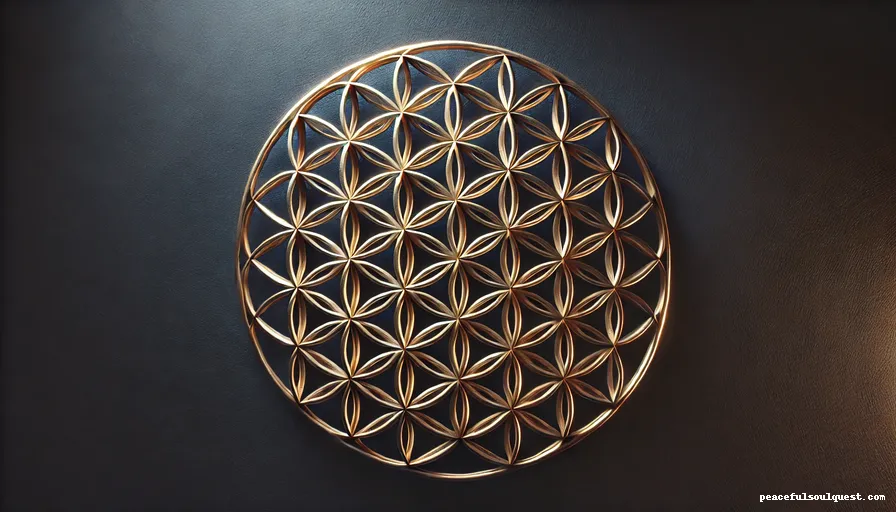
Sacred Geometry and Spiritual Significance
The Flower of Life is one of the most significant symbols in sacred geometry and spirituality. It consists of overlapping circles arranged in a flower-like pattern, which is believed to contain the blueprint of creation.
The Flower of Life symbolizes the interconnectedness of all life and the unity of all living beings.
In sacred geometry, the Flower of Life is seen as the foundation of all geometric patterns and a representation of the universe’s fundamental structure.
It is believed that this symbol holds the secrets of the universe and can be used as a tool for meditation and spiritual growth.
Symbolism of Interconnectedness
The Flower of Life symbolizes the interconnectedness of all things in the universe. Each circle in the pattern represents a part of the whole, illustrating how all life is interlinked.
This interconnectedness is a key concept in many spiritual traditions, emphasizing that we are all part of a greater cosmic order.
The Flower of Life also represents the cycle of creation, reflecting the idea that life is a continuous process of growth, decay, and renewal.
This cycle is mirrored in the Flower of Life‘s geometric pattern, which can be infinitely expanded, symbolizing the limitless possibilities of life and creation.
Use in Various Cultures and Traditions
The Flower of Life has been found in various cultures and traditions throughout history. It has been discovered in ancient temples, manuscripts, and artworks, indicating its long-standing significance as a spiritual symbol.
In Egyptian culture, the Flower of Life was associated with the creation of the universe and the idea of cosmic harmony.
In modern times, the Flower of Life is often used as a tool for meditation and spiritual healing. Its intricate pattern is believed to help individuals connect with the divine and achieve a higher state of consciousness.
The symbol is also used in various forms of art and design, representing the beauty and complexity of life.
9. The Zen Circle (Ensō)
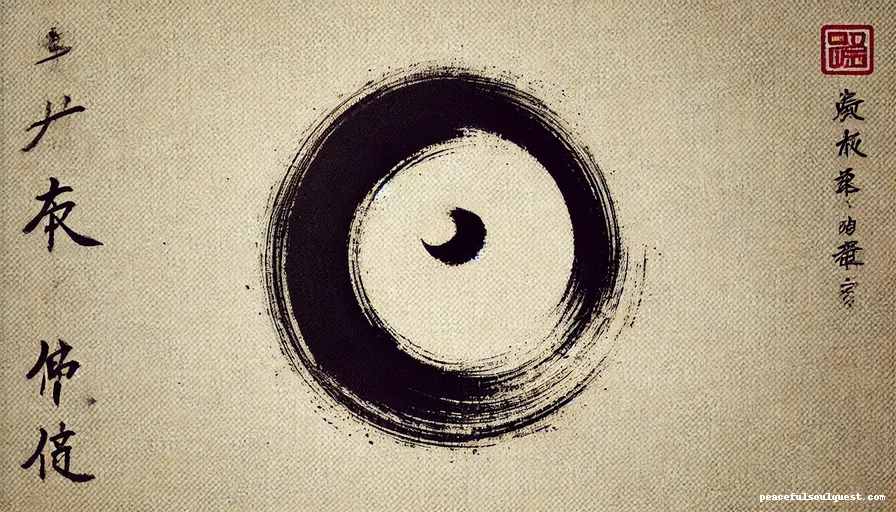
Representation of Enlightenment and the Universe
The Zen Circle, also known as Ensō, is a significant Symbol of Enlightenment in Zen Buddhism. It is often depicted as a single brushstroke circle, symbolizing the universe and the void, which are central concepts in Zen philosophy.
The Ensō represents the cycle of life, the interconnectedness of all things, and the perfection of the present moment.
The Zen Circle is a powerful reminder of the impermanence of life and the importance of embracing each moment as it is.
In Zen practice, the Ensō is often drawn in one fluid motion, capturing the essence of the artist’s mind at the moment of creation. This spontaneous act reflects the Zen belief in the beauty of imperfection and the transient nature of existence.
Significance in Zen Buddhism
In Zen Buddhism, the Ensō is more than just a symbol; it is a practice. Drawing the Ensō is a form of meditation that allows practitioners to express their state of mind.
A closed circle represents a complete, contained state of enlightenment, while an open circle suggests the idea that enlightenment is an ongoing journey, open to infinite possibilities.
The Ensō is also a symbol of the void, or Sunyata, a concept in Buddhism that refers to the emptiness or absence of inherent existence in all things.
This idea is central to Zen teachings, which emphasize the importance of seeing beyond the illusion of separateness and recognizing the interconnectedness of all life.
Artistic Depictions and Meanings
Artists often depict the Ensō in various forms, each carrying its unique meaning. Some Ensō are thin and delicate, symbolizing a sense of fragility and transience, while others are bold and thick, representing strength and confidence.
The variations in the Ensō‘s form reflect the different states of mind of the artist, making each circle a unique expression of enlightenment.
In modern times, the Ensō has been adopted by artists and spiritual practitioners worldwide as a symbol of mindfulness, presence, and the beauty of the imperfect.
It is often used in calligraphy, paintings, and tattoos, serving as a reminder of the importance of living fully in the present moment.
10. The Happy Buddha (Budai)
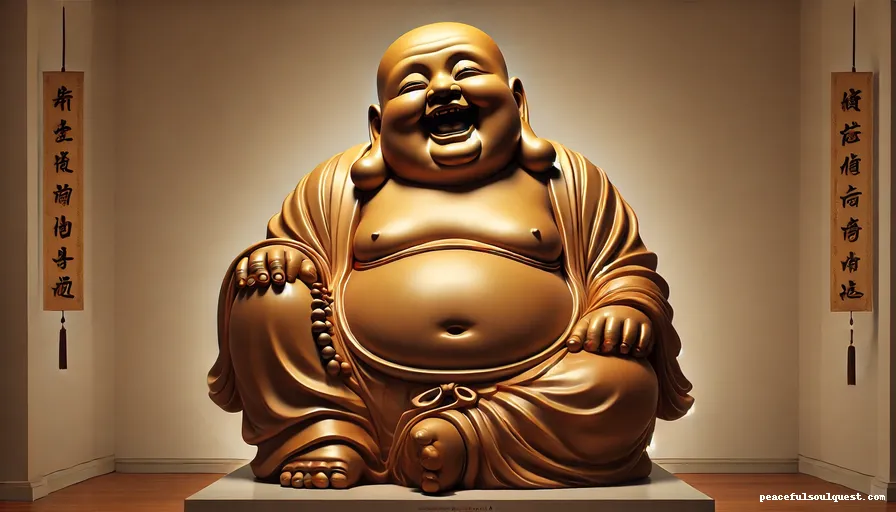
Symbol of Joy and Prosperity
The Happy Buddha, also known as Budai in Chinese and Hotei in Japanese, is a popular figure in Buddhist folklore.
Unlike the serene image of the historical Buddha, Budai is depicted as a joyful, rotund figure with a big belly and a wide smile. He is often seen carrying a sack full of treasures, symbolizing abundance, contentment, and prosperity.
Budai is considered a symbol of happiness and good fortune. His carefree and joyous demeanor reminds us that enlightenment is not just about transcending suffering but also about embracing the joy and abundance of life.
The Happy Buddha teaches that true wealth is not found in material possessions but in a heart full of gratitude and contentment.
Historical and Cultural Context
The legend of Budai dates back to the 10th century in China, where he was known as a wandering monk who spread joy and laughter wherever he went.
He is often considered an incarnation of Maitreya, the future Buddha who is prophesied to bring peace and enlightenment to the world.
In many Asian cultures, statues of the Happy Buddha are placed in homes, temples, and businesses to attract good luck and positive energy.
Rubbing the belly of a Budai statue is a common practice believed to bring prosperity and happiness. This tradition reflects the deep cultural significance of Budai as a bringer of blessings and good fortune.
Interpretations and Modern Usage
Today, the Happy Buddha continues to be a beloved symbol of joy, abundance, and enlightenment. His image is commonly used in art, jewelry, and home decor as a reminder to cultivate happiness and gratitude in our daily lives.
The Happy Buddha encourages us to find joy in the simple pleasures of life and to approach our spiritual journey with a light heart.
In the modern world, the Happy Buddha is also seen as a symbol of inclusivity and acceptance.
His joyful expression and open heart remind us that the path to enlightenment is one that embraces all beings, regardless of their circumstances or background.
11. The Coexist Symbol

Courtesy:https://commons.wikimedia.org/wiki/File:Coexist_Tattoo_White_1080p.png
Representation of Unity and Diversity
The Coexist Symbol is a modern Symbol of Enlightenment that represents unity, diversity, and the peaceful coexistence of different religious and cultural beliefs.
The symbol combines elements from various religious icons, including the Islamic crescent, the Christian cross, the Jewish Star of David, and others, to create a powerful message of harmony and understanding.
This symbol emphasizes the idea that despite our differences, we can coexist peacefully and respect one another’s beliefs.
It challenges us to see beyond the boundaries of religion, culture, and ethnicity and to recognize the common humanity that connects us all.
Cultural and Spiritual Importance
The Coexist Symbol has become a global icon for peace and tolerance. It is often used in movements that promote social justice, religious tolerance, and intercultural dialogue.
The symbol serves as a reminder that true enlightenment comes from embracing diversity and finding unity in our shared values.
In spiritual contexts, the Coexist Symbol reflects the belief that all paths lead to the same ultimate truth.
It encourages us to approach our spiritual journey with an open mind and a compassionate heart, recognizing that there are many ways to seek enlightenment and that each path has its unique wisdom to offer.
Promoting Peace and Acceptance
The Coexist Symbol is not just a visual representation but a call to action. It urges us to live in a way that promotes peace, understanding, and acceptance.
By embracing the principles of coexistence, we contribute to a more harmonious world where all beings can thrive and achieve enlightenment.
In modern times, the Coexist Symbol is often used in campaigns, educational programs, and art projects aimed at fostering dialogue and mutual respect among different communities.
It serves as a powerful reminder that enlightenment is not just a personal journey but a collective one, where the well-being of all is interconnected.
12. Additional Symbols
The Pinecone

Symbolism in Ancient Civilizations
The Pinecone is an ancient symbol of enlightenment and eternal life. Its unique spiral pattern is a representation of growth, regeneration, and spiritual awakening.
In various cultures, the Pinecone has been associated with the pineal gland, which is believed to be the “third eye” or the seat of the soul, playing a role in spiritual consciousness and enlightenment.
In ancient Rome, the Pinecone was used as a symbol of immortality, and in the Catholic Church, it represents eternal life.
The Pinecone is also found in ancient Assyrian art, symbolizing the connection between the human and the divine.
Representation of Enlightenment and Eternal Life
The Pinecone‘s symbolism of eternal life and enlightenment continues to be relevant today. Its spiral shape, mirroring the Fibonacci sequence, is often seen as a reflection of the natural order and the universe’s underlying structure.
The Pinecone encourages us to explore the deeper aspects of our consciousness and to seek a connection with the divine.
13. The Garuda Mudra

Symbolism and Spiritual Benefits
The Garuda Mudra is a symbolic hand gesture used in meditation and yoga, named after the mythical bird Garuda. It represents freedom, strength, and spiritual awakening.
The Garuda Mudra is believed to activate the flow of energy within the body, helping to balance the mind and enhance spiritual awareness.
In Hindu and Buddhist traditions, the Garuda Mudra is associated with the transformation of negative energy into positive energy, symbolizing the journey towards enlightenment.
Usage in Meditation and Yoga
The Garuda Mudra is commonly used in meditation and yoga practices to promote inner balance and harmony. By performing this mudra, practitioners can cultivate a sense of freedom and strength, helping them overcome obstacles on their spiritual path.
The Garuda Mudra serves as a powerful tool for those seeking to enhance their spiritual practice and achieve a higher state of consciousness.
The Journey to Enlightenment
Integrating Symbols into Daily Life
Symbols of Enlightenment, such as the Zen Circle, Happy Buddha, Coexist Symbol, Pinecone, and Garuda Mudra, are more than just abstract concepts; they are practical tools that can be integrated into our daily lives.
By incorporating these symbols into our spiritual practices, we can stay connected to the deeper truths they represent and remain focused on our journey towards enlightenment.
Personal Reflections and Insights
Each of these symbols offers unique insights into the nature of enlightenment. They encourage us to explore our inner selves, embrace the present moment, and live in harmony with others.
Reflecting on these symbols can provide us with the guidance and inspiration we need to steer the challenges of life and continue growing spiritually.
Continuing the Path to Enlightenment
The path to enlightenment is an ongoing journey, filled with opportunities for growth, learning, and transformation.
By studying and meditating on these Symbols of Enlightenment, we can stay connected to the wisdom of the ages and continue moving forward on our spiritual path.
Whether through art, meditation, or daily reflection, these symbols serve as constant reminders of the beauty, complexity, and interconnectedness of life.
